| habotan | Habotan is a family of cabbage. We enjoy the color and curly leaves. |
|||||||||||||
| haburashi |  |
tooth brush | ||||||||||||
| hadakamatsuri | 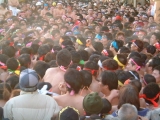 |
naked festival | ||||||||||||
| hagi |  |
Bush Clover One of "Aki no nana-kusa (the seven herbs in autumn)" |
||||||||||||
| hagoita | battledore Japanese traditional game hanetsuki is played with hagoita and shuttlecock.. Hanetsuki is similar to badminton and was very popular among girls as a special New Year's game in old time. Recentry, hagoita with gorgeous picked cloth pictures are sold in the hagoita-ichi (Hagoita Fair) which held in specific temples or shrines in the middle of December. |
|||||||||||||
| haikan |  |
piping, plumbing | ||||||||||||
| hakucho | 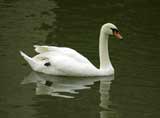 |
swan | ||||||||||||
| hamachi | 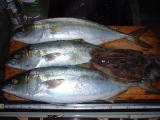 |
young yellowtail | ||||||||||||
| hamachi sashimi |
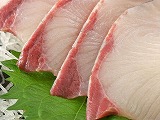 |
sashimi of yellowtail | ||||||||||||
| hamon |  |
ripple sensation |
||||||||||||
| hanabi |  |
fireworks | uchiage hanabi |
tezutsu hanabi |
||||||||||
| hanabi taikai | 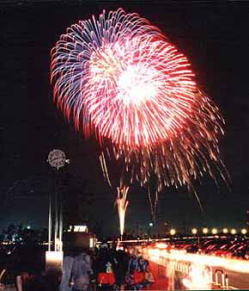 |
|||||||||||||
| hanafuda | 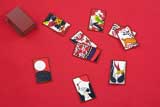 |
floral playing cards |
||||||||||||
Hana Matsuri |
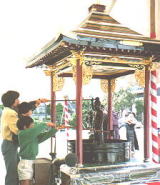 |
Buddha's Birthday | ||||||||||||
| hanami | 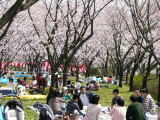 |
an outing for viewing cherry blossoms or picnic under cherry blossoms at their best in spring |
||||||||||||
| hanami-dango | In "Hanami" season, we eat three-color rice dumpling called (O)hanami-dango.. Pink represents sakura (spring), white waygoing winter and green coming summer. |
|||||||||||||
| hanamizuki | 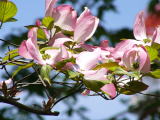 |
After the sakura season, hanamizuki broom along streets in Nagoya pic/April 28 |
||||||||||||
| hanamochi | 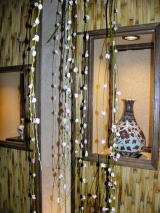 |
Pink and white mochi (rice cake) are attached on the blanches of weeping willow. They look like Spring flowers. |
||||||||||||
| hana-shobu | 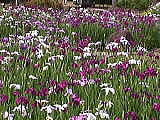 |
iris Gardens of Hana-shobu in Chiryu-koen (Chiryu C.) are very beautiful. |
||||||||||||
| hanetsuki | Japanese badminton Traditional Japanese girls' play on New Year's Day |
|||||||||||||
| hangesho | - | The 11th day after the summer solstice is called "Hangesho". Usually July 2nd or 3rd. Hange (半夏) is the Chinese name of karasubishaku (crowdipper). In this season, hangesho has flowers. |
||||||||||||
| hannya | hannya (般若)means Buddhist wisdom or Prajnaparamita;Perfection of Wisdom On a Noh mask, hannya represents a female serpent-demon with jealousy and hatred. |
|||||||||||||
| haratsuzumi | Hara means a stomach and tsuzumi is a kind of small Japanese traditional drum | |||||||||||||
| hari | acupuncture | |||||||||||||
| harumaki |  |
spring roll | ||||||||||||
| haru-no-nanakusa | 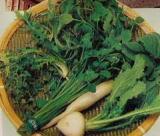 |
the seven herbs of spring. seri (Japanese parsley), nazuna (shepherd's purse), gogyo (cottonweed), hakobera (chickweed), hotokenoza (henbit plant), suzuna (turnip ) and suzushiro (Japanese radish) => nanakusa-gayu |
||||||||||||
| haruzaifu | Haruzaifu/春財布 Spring is the time to buy a new wallet. Haru春 means spring and zaifu (→saifu) means wallet. This has a play on words linking haru 春(spring) and haru張る(bulge). So、a wallet purchaced in spring will be a bulging wallet.with money |
|||||||||||||
| hashi | 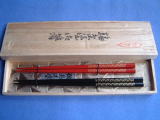 |
chopsticks | ||||||||||||
| hato | 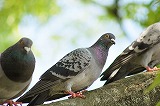 |
dove, pigeon | ||||||||||||
| hatsu-hinode | The sunrise on New Year's Day | |||||||||||||
| hatsu-yume | The first dream of the New Year. Ichi Fuji, Ni Taka, San Nasubi |
|||||||||||||
| haze |  |
(Japanese) wax tree; sumac (sumach) |
||||||||||||
| haze no mi | 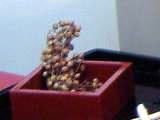 |
fruits of haze wax from haze fruits is used for making Japanese candles |
||||||||||||
| hebi | 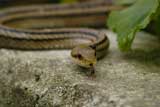 |
snake | ||||||||||||
| hechima | 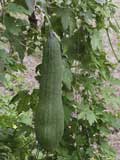 |
sponge cucumber, loofa | ||||||||||||
| hechima-tawashi | 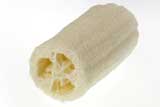 |
sponge of hechima | ||||||||||||
| higambana | 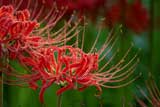 |
Cluster amaryllis Spider lily |
||||||||||||
| Higashiyama Kyusuito |
|
Higashiyama Water Tower | ||||||||||||
| higesori (ki) |  |
shaver | ||||||||||||
| Hikoboshi | Altair In the story of tanabata, Hikoboshi is |
|||||||||||||
| hikosen | zeppelin, airship | |||||||||||||
| himan | corpulence, over weight BMI (Body Mass Index) = weight (kg) / height X height (m) More than 25=> Over weight, Most healthy index is BMI 22=> average
|
|||||||||||||
| himawari | 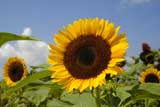 |
sunflower | ||||||||||||
| hime-daruma | One of Japan's bringer of good luck. |
|||||||||||||
| Himeji-jo |  |
Himeji-jo is one of the most beautiful castles in Japan and a national treasure. | ||||||||||||
| hina-ningyo |  |
Hina dolls for Girls' Day | ||||||||||||
hina-matsuri |
 |
.Girl's Day | ||||||||||||
Hinomaru |
Japan's national flag is called Hinomaru. The red circle in the center is representative of the rising sun. |
|||||||||||||
Hinomaru Bento |
 |
Bento which contains plain white rice with a red umeboshi. It reminds us Japan's national flag., so it named Hinomaru (Japan's national flag) bento |
||||||||||||
| hirame | 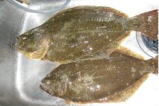 |
false halibut | ||||||||||||
| hirune | nap | |||||||||||||
| hishimochi | 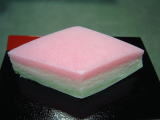 |
diamond-shaped rice cake for hina-matsuri or doll festival |
||||||||||||
| Hisho 飛翔 |
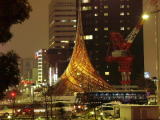 |
"Hisho" is the name of monument in front of Nagoya Station. It was designed in the image of the rope of Jomon earthware vessels. The total construction cost was at 500 million yen. Hight 23m |
||||||||||||
| hitori-zumo (hitori sumo) |
 |
Sumo fight alone | ||||||||||||
| hitori-zumo o toru | 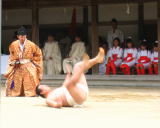 |
Fight wundmills | ||||||||||||
| hitotsume-kozo | one of the traditional Japanese hobgoblins in folk tales hitotsu means one, me means an eye, and kozo means a young boy monk. |
|||||||||||||
| hitsumabushi | 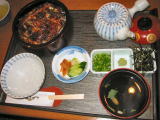 |
Hitsumabushi | ||||||||||||
| hokora | Small shrine | |||||||||||||
| hone | bone | |||||||||||||
| hono |  |
flame, blaze | ||||||||||||
| honyuubin |  |
feeding bottle | ||||||||||||
| horenso | 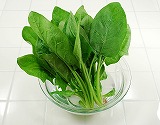 |
spinach | ||||||||||||
| Hosha Shinji | 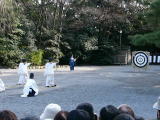 |
Shinto function hold on Jan 15 in Atsuta Jingu | ||||||||||||
| hotaru | firefly | |||||||||||||
| hotaru-gari | firefly hunting and catching It used to be a popular pastime on summer night. Recently, the number of firefly has been decreased by bad environment hotaru means firefly and gari (kari -.karu) means hunting |
|||||||||||||
| hotategai | 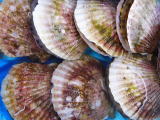 |
scallop | ||||||||||||
| hotchikisu | stapler | |||||||||||||
| hoto-shiki | 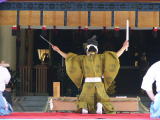 |
One of the Japanese cooking ceremony to cook fish without touching it. The cook uses a short eword and long chopsticks. You can view it in the ceremony of Mitama-matsuri in Gokoku Shrine (April 28-30) |
||||||||||||
| hyakudo-ishi | 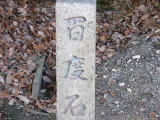 |
o-hyakudo means hundred times worship. People walk back and fouth a hundered times between a main shrine and hyakudo-shi offering a prayer each time. |
||||||||||||
| hyakunin-isshu | 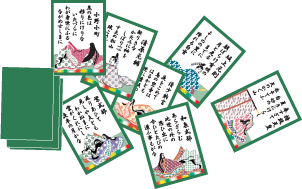 |
Hyakunin-isshu is  |
||||||||||||
| hyoshigi | 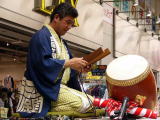 |
clapper One of the important tools for the Japanese traditional cultures: sumo, kabuki, night patro, etc. |
||||||||||||
| hyoshiki |  |
sign, guide, indicator | ||||||||||||